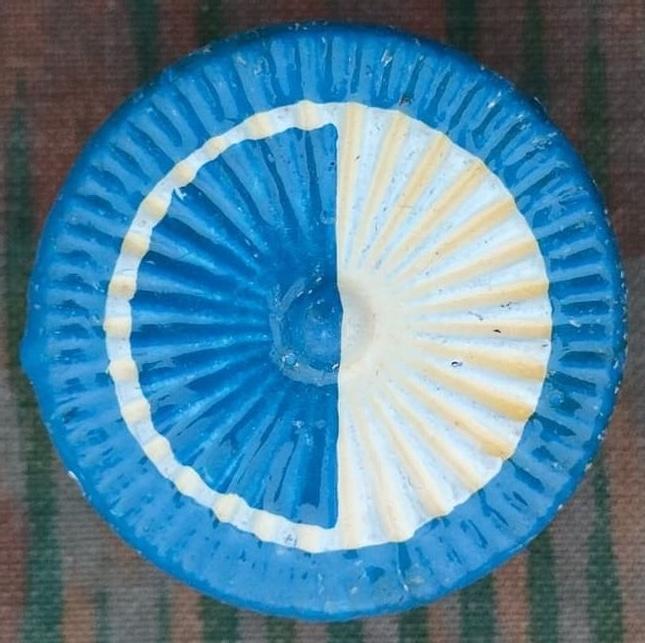 Flagge "Flagge des Kanton Luzern" bei fahnenversand.de kaufen.
Flagge "Flagge des Kanton Luzern" bei fahnenversand.de kaufen.
 Flagge "Flagge des Kanton Luzern" bei fahnenversand.de kaufen.
Flagge "Flagge des Kanton Luzern" bei fahnenversand.de kaufen.
Last modified: 2025-03-15 by martin karner
Keywords: switzerland | luzern | german |
Links: FOTW homepage |
search |
disclaimer and copyright |
write us |
mirrors
Description of the Flag
Per fess argent and azure.
Horizontally divided into equal parts white over blue.
T.F. Mills, 17 October 1997
Symbolism of the flag
The symbolism of the blue and white is lost to history, but there are
several possible explanations. In modern popular culture, the blue
represents lakes and the white represents snow-capped mountains –
which is a handy mnemonic for displaying the flag horizontally. A
second explanation is that these are the colours of the Virgin Mary.
A third explanation is that the Lucerne flag is taken from the arms
of the important von Littau family (per fess dancetty argent and
azure, i.e. identical but divided in zigzag fashion).
T.F. Mills, 17 October 1997
– Seal of Luzern with oldest known depiction of the emblem (c. 1386). Location: State Archive, Luzern (source).
– Banner of Luzern, with Zwickelbild granted from Pope Pius Sixtus IV in 1480 (source: [b7b42]).
– Julius Banner (1512), dedicated from pope Julius II for Luzern's support in the Pavia campaign. The Zwickelbild shows Jesus with his disciples on Mount Olivet (source).
– Stained glass plate (ca. 1519) in the church of Ursenbach BE, with the centered trefoil of
the Luzern shields and the imperial double eagle as a sign of imperial immediacy, surrounded by the district emblems
of Willisau (top left), Rothenburg, Entlebuch, Ruswil, Michelsamt (Münster), Habsburg (Meggen), Sursee, Sempach,
Weggis, Kriens, Büron, Malters, Merenschwand and Ebikon (source).
– Stained glass plate (1676), asc. to Hans Jakob Geilinger d.Ä.,
with pyramid of arms, flanked by the patron saints Leodegar and Mauritius. The latter holding banner and
shield with white "St. Mauritius cross" on red (see also Switzerland – History of the flag),
the former holding a crozier and the drill with which he was blinded. On top the scenes of the blinding of
Leodegar and decapitation of Mauritius. Location: Historical Museum, Bern (source).
– Cavalry standard (17th/18th c., 146x148 cm). Gyronny with
red-yellow-red-white fields. Red-white-yellow-blue fringes on all four sides (b/w photo, source: [b7b42]).
– Battalion flag of Luzern, carried during the Sonderbund War, 1847.
The Confederate Cross was used here by a member of the secessionist Sonderbund cantons (b/w photo, source: [b7b42]).
![[Colour Flag LU]](../images/c/ch-lu_56.gif) image
by Ole Andersen
image
by Ole Andersen
Rectangular cantonal flag, as shown in Kannik (1956) [So-called
colour flag (Farbenfahne in German)].
Ole Andersen, 4 August 2002
See also: STATE COLOURS in Dictionary of Vexillology
Coat of Arms
![[Flag of Lucerne]](../images/c/ch-lu).gif) image by António Martins-Tuvalkin,
3 January 2006
image by António Martins-Tuvalkin,
3 January 2006
Flaggen, Knatterfahnen and Livery Colours |
![[Knatterfahnen]](../images/c/ch-lu_kf.gif)
|
Flaggen are vertically hoisted from a crossbar in the manner of gonfanon, in ratio of about 2:9, with a swallowtail that indents about 2 units. The chief, or hoist (square part) usually incorporates the design from the coat of arms – not from the flag. The fly part is always divided lengthwise, usually in a bicolour, triband or tricolour pattern (except Schwyz which is monocolour, and Glarus which has four stripes of unequal width). The colours chosen for the fly end are usually the main colours of the coat of arms, but the choice is not always straight forward.
Knatterfahnen are similar to Flaggen, but hoisted from the long side and have no swallow tail. They normally show the national, cantonal or communal flag in their chiefs.
Željko Heimer, 16 July 2000
See also: HANGING FLAG, VERTICALLY HOISTED FLAG, LIVERY COLOURS in Dictionary of Vexillology

 images located by Martin Karner
images located by Martin KarnerAt the beginning of the 20th century, flamed flags were still in use, with the white cross replaced by
a (baroque) shield in the centre of the flag. These decorative flags had been used until WWII and then
somewhat forgotten in preference of the current cantonal flags. [Today they are being
produced again, see right image]
Pascal Gross, 30 June 2002
See also: • National flag and other cantonal flags with "Early 20th century flag design"
• Modern flamed flags
• FLAMMES in Dictionary of Vexillology
logo.jpg) image located by Martin Karner (8 May 2024)
image located by Martin Karner (8 May 2024)logo_old.jpg) image located by Martin Karner (8 May 2024)
image located by Martin Karner (8 May 2024) image located by Martin Karner
image located by Martin KarnerCockade for the cantonal troops' headgear (regulation from 1898, size: ca. 35 mm, reverse side).
Martin Karner, 14 March 2025
See also: Cockades (Swiss Army)







